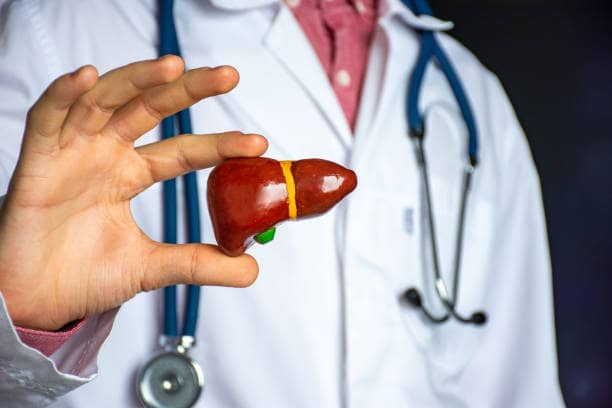Gallbladder Stone Treatment:Gallstones are a common medical condition that affects millions of people worldwide. These small, hardened deposits can develop in the gallbladder, causing pain and discomfort. If you or someone you know is suffering from gallstones, it’s essential to understand the various treatment options available. In this comprehensive guide, we’ll explore the causes, symptoms, and a wide range of treatment strategies for gallstones, including medical, surgical, and lifestyle interventions.

I. Understanding Gallstones:
- What Are Gallstones?
Gallstones are solid particles that form in the gallbladder, a small organ located just beneath the liver. These stones can vary in size and composition, with some being as small as a grain of sand, while others can grow to be as large as a golf ball. They are primarily made up of cholesterol or bilirubin, a waste product produced by the liver.
- Causes of Gallstones Several factors can contribute to the formation of gallstones, including:
a. Diet: High-cholesterol and low-fiber diets can increase the risk.
b. Obesity: Excess body weight can lead to an increased risk of gallstones.
c. Genetics: A family history of gallstones can make an individual more susceptible.
d. Rapid weight loss: Crash diets or bariatric surgery can trigger gallstone formation.
e. Gender: Women are more likely to develop gallstones than men.
f. Age: Gallstones become more common with age.
II. Symptoms of Gallstones:
- Silent Gallstones: Not everyone with gallstones experiences symptoms. Some people have “silent” gallstones, which means they do not cause any noticeable discomfort or issues. These stones are often discovered incidentally during medical imaging tests for unrelated conditions.
- Symptoms of Gallstone Attack: For those who do experience symptoms, a gallstone attack can be excruciating. Common symptoms include: a. Sudden, severe abdominal pain, often in the upper right side or center of the abdomen. b. Pain that radiates to the back or right shoulder blade. c. Nausea and vomiting. d. Bloating and indigestion. e. Jaundice (yellowing of the skin and eyes) if a stone blocks the common bile duct.
III. Diagnostic Procedures:
If you suspect you have gallstones or are experiencing symptoms, it’s crucial to seek medical attention. To diagnose gallstones, healthcare providers may use various diagnostic procedures, including:
- Ultrasound: This painless imaging technique is the most common method for detecting gallstones.
- Blood Tests: Elevated levels of liver enzymes and bilirubin can indicate gallbladder problems.
- CT Scan or MRI: These imaging techniques may be used in cases where ultrasound results are inconclusive.
IV. Treatment Options for Gallstones:
Treatment for gallstones depends on the severity of symptoms, the size and number of stones, and the individual’s overall health. Here are the primary treatment options:
- Watchful Waiting: If you have silent gallstones or mild symptoms that are infrequent and manageable, your doctor may recommend watchful waiting. This approach involves monitoring your condition and waiting to see if the symptoms worsen. Lifestyle changes, such as dietary modifications, may also be suggested to prevent further stone formation.
- Medications: Medications can be used to dissolve gallstones in some cases. Ursodiol (ursodeoxycholic acid) is a common medication prescribed for this purpose. However, it is generally only effective for small, cholesterol-based stones and may take months to work.
- Extracorporeal Shock Wave Lithotripsy (ESWL): ESWL is a non-invasive procedure that uses shock waves to break gallstones into smaller pieces, making them easier to pass through the bile ducts. This treatment is typically reserved for people with smaller stones and specific conditions.
- Endoscopic Retrograde Cholangiopancreatography (ERCP): ERCP is a procedure that combines endoscopy with X-ray imaging. It is used to locate and remove gallstones that have migrated into the common bile duct. This is usually performed in conjunction with other treatments.
- Surgical Removal: When symptoms are severe or complications arise, surgical removal of the gallbladder (cholecystectomy) is often recommended. There are two main types of cholecystectomy:
a. Laparoscopic Cholecystectomy: This minimally invasive procedure involves making several small incisions in the abdomen to remove the gallbladder using specialized instruments and a camera.
b. Open Cholecystectomy: In more complex cases, open surgery may be necessary, which involves a larger incision in the abdomen.
In addition to medical and surgical treatments, making certain lifestyle changes can help manage gallstones and reduce the risk of recurrence. Here are some practical tips:
- Adopt a Gallstone-Friendly Diet: a. Reduce your intake of saturated fats and cholesterol-rich foods. b. Incorporate more fiber-rich foods into your diet. c. Avoid rapid weight loss and fad diets. d. Stay hydrated by drinking plenty of water. e. Limit alcohol consumption.
- Maintain a Healthy Weight: a. Aim for gradual, sustainable weight loss if you’re overweight. b. Avoid crash diets that can increase the risk of gallstone formation.
- Physical Activity: a. Engage in regular exercise to help with weight management and overall health.
- Monitor Medications: a. If you’re taking medications that increase the risk of gallstones (e.g., certain cholesterol-lowering drugs), discuss alternatives with your healthcare provider.
- Eat Smaller, More Frequent Meals: a. This can help prevent overloading the gallbladder with large meals.
- Avoid Rapid Weight Gain: a. Pregnancy-related weight gain and yo-yo dieting can increase the risk of gallstones.
Conclusion:
Gallstones can be a painful and uncomfortable condition, but with the right treatment and lifestyle changes, they can be managed effectively. The choice of treatment depends on various factors, including the severity of symptoms and the type of gallstones present. If you suspect you have gallstones or are experiencing symptoms, seek medical attention promptly to receive a proper diagnosis and treatment plan. By adopting a gallstone-friendly lifestyle, you can reduce the risk of developing new stones and enjoy better overall health. Remember to consult with your healthcare provider for personalized guidance and support on managing gallstones.








One thought on “Gallbladder Stone Treatment”